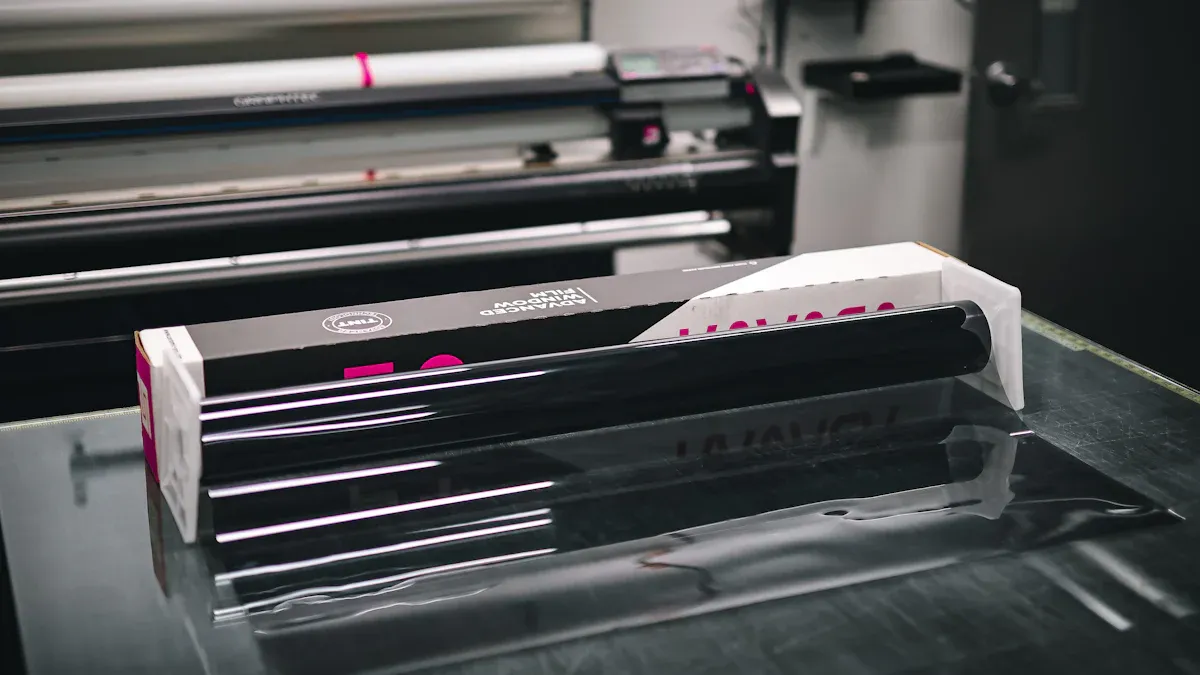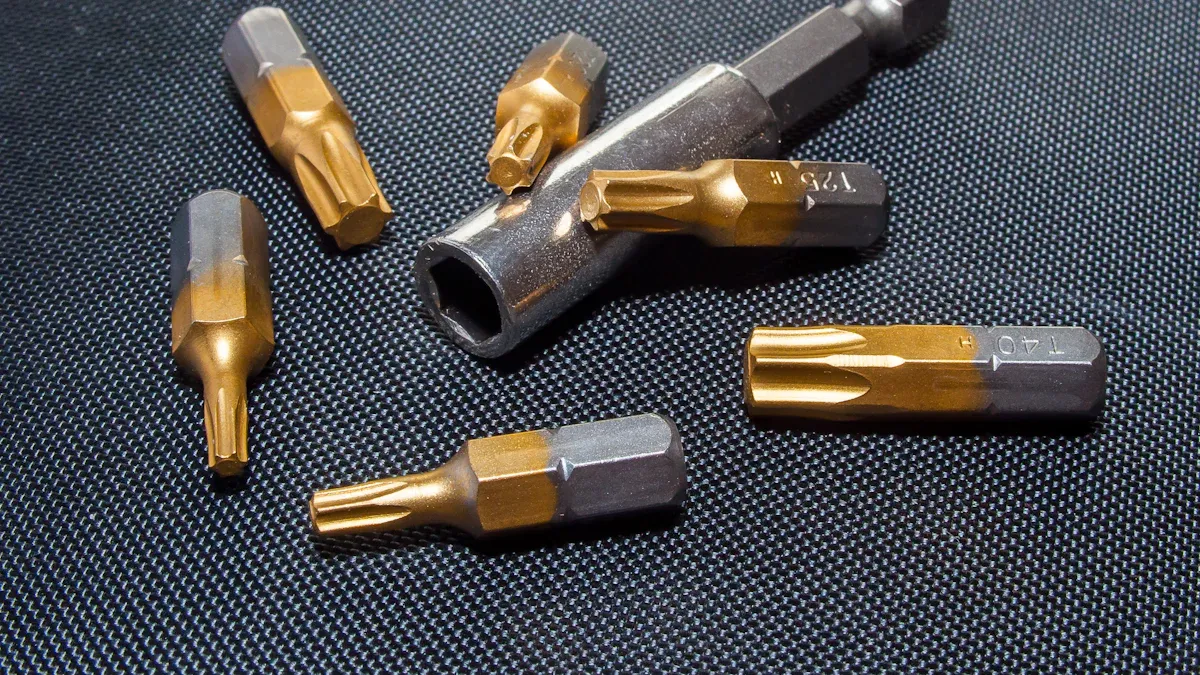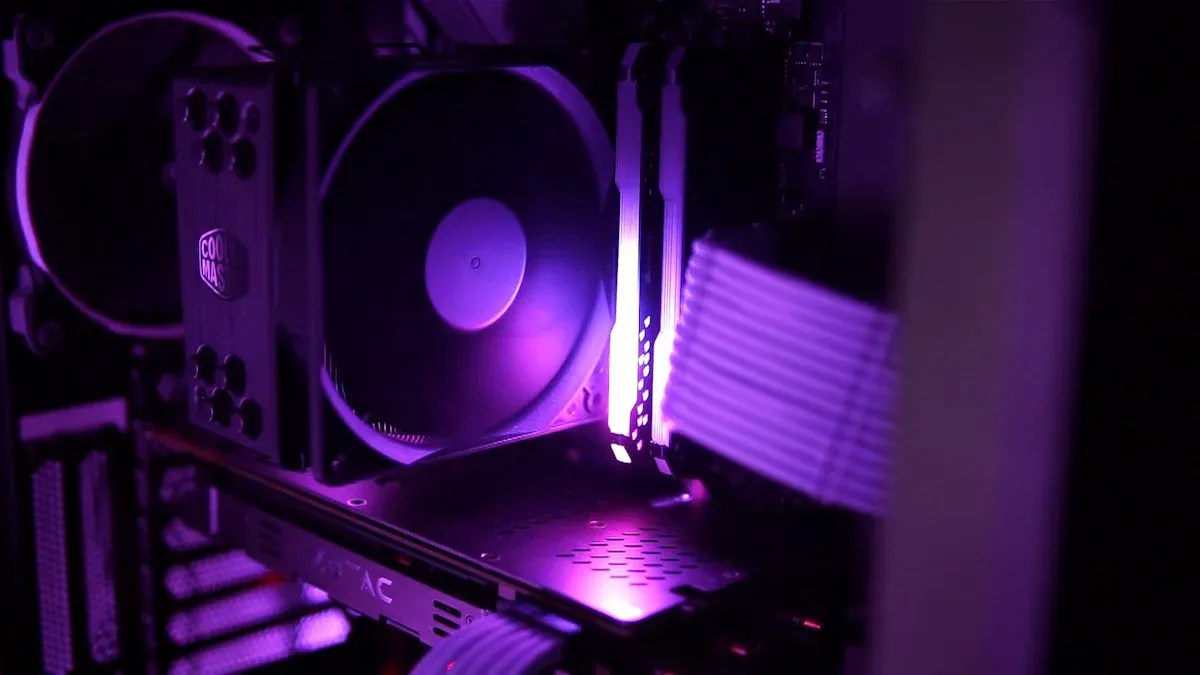
You might be wondering how TaC coating technology is evolving to meet modern demands. Recent breakthroughs include oxidation-resistant coatings that enhance durability and advanced methods like CVD coating for precise application. Sustainable production practices are also gaining traction. These innovations are transforming industries, from aerospace to semiconductor manufacturing, where SiCコーティング and TaC coating play critical roles in improving performance and reliability.
キーテイクアウト
- TaC coatings are very hard and can handle high heat. This makes them great for industries like aerospace and semiconductors.
- New methods, like plasma-enhanced techniques, make TaC coatings stronger and last longer. They also help use less material.
- Eco-friendly ways, like reusing materials and saving energy, make TaC coatings cheaper and better for the environment.
Overview of TaC Coating Technology
Key Properties of TaC Coatings
You might already know that TaC coatings are highly valued for their exceptional properties. These coatings are incredibly hard, making them resistant to wear and tear. They also have a high melting point, which allows them to perform well in extreme temperatures. This makes them ideal for environments where other materials might fail.
Another key feature is their chemical stability. TaC coatings resist corrosion, even when exposed to harsh chemicals. This property ensures that the coated surfaces remain intact and functional over time. Additionally, TaC coatings exhibit excellent thermal conductivity. This means they can efficiently transfer heat, which is crucial in applications like aerospace and energy systems.
Traditional Applications of TaC Coatings
TaC coatings have been used in various industries for decades. In the aerospace sector, you’ll find them protecting components like turbine blades and rocket nozzles. Their ability to withstand high temperatures and resist oxidation makes them a perfect fit for these demanding applications.
In manufacturing, TaC coatings are often applied to cutting tools and molds. Their hardness and wear resistance ensure that these tools last longer and perform better. You’ll also see TaC coatings in the electronics industry, where they are used to enhance the durability of semiconductor components.
ヒント: The versatility of TaC coatings makes them a go-to solution for industries that require high-performance materials.
Recent Technological Advancements

Innovations in Deposition Techniques
You might wonder how TaC coating technology achieves its precision and durability. Recent innovations in deposition techniques have revolutionized the way these coatings are applied. Chemical Vapor Deposition (CVD) and Physical Vapor Deposition (PVD) are now more advanced than ever. These methods allow you to create ultra-thin, uniform coatings with exceptional adhesion to the substrate.
One exciting development is the use of plasma-enhanced deposition. This technique uses plasma to improve the coating’s density and reduce defects. It ensures that the TaC coating performs reliably, even in extreme conditions. Another breakthrough involves hybrid deposition methods. These combine multiple techniques to optimize coating properties, such as hardness and thermal stability.
Note: Advanced deposition techniques not only enhance performance but also reduce material waste, making them more efficient and cost-effective.
Development of Oxidation-Resistant Coatings
Oxidation resistance is critical for materials exposed to high temperatures. Traditional TaC coatings, while durable, faced challenges in extremely oxidative environments. Recent advancements have addressed this issue by introducing multi-layered and doped coatings. These innovations improve the coating’s ability to resist oxidation, even at temperatures exceeding 2000°C.
For example, researchers have developed TaC coatings with silicon or aluminum doping. These elements form a protective oxide layer when exposed to air, preventing further oxidation. You’ll also find coatings with gradient structures. These gradually transition from one material to another, enhancing both thermal and chemical stability.
This progress ensures that TaC coatings remain reliable in demanding applications like aerospace engines and energy systems.
Sustainable Production Methods
Sustainability is becoming a priority in every industry, and TaC coating technology is no exception. Traditional production methods often consumed significant energy and generated waste. However, new approaches are making the process more eco-friendly.
One method involves recycling tantalum and carbon materials during the coating process. This reduces the need for raw material extraction, which can be both costly and environmentally damaging. Another innovation is the use of energy-efficient deposition systems. These systems minimize energy consumption without compromising the quality of the coating.
You’ll also see a shift toward water-based solvents and non-toxic chemicals in the production process. These changes make TaC coating technology safer for both workers and the environment.
ヒント: Sustainable practices not only benefit the planet but also lower production costs, making TaC coatings more accessible to various industries.
Emerging Applications

Use in Semiconductor Manufacturing
You’ll find TaC coating playing a vital role in semiconductor manufacturing. The industry demands materials that can withstand extreme conditions during wafer processing. TaC coatings provide the durability and thermal stability needed for tools like etching chambers and deposition equipment. These coatings resist wear and maintain their integrity, even under high temperatures and corrosive environments.
Another advantage is their ability to reduce contamination. TaC coatings create a smooth, non-reactive surface that minimizes particle generation. This ensures higher yields and better-quality semiconductor devices. As chip designs become more advanced, the demand for reliable coatings like TaC continues to grow.
Applications in Aerospace and Defense
In aerospace and defense, you’ll see TaC coatings used to protect critical components. Jet engines, rocket nozzles, and hypersonic vehicles operate in extreme heat and pressure. TaC coatings excel in these conditions due to their high melting point and oxidation resistance.
These coatings also enhance the lifespan of components. By reducing wear and corrosion, they ensure that parts perform reliably over extended periods. This reliability is crucial for missions where failure is not an option. The aerospace and defense sectors increasingly rely on TaC coatings to meet their performance and safety standards.
Role in Advanced Energy Systems
TaC coatings are making strides in advanced energy systems. You’ll find them in nuclear reactors, where they protect components from radiation and high temperatures. Their chemical stability ensures that they remain effective in harsh environments.
In renewable energy, TaC coatings improve the efficiency of solar panels and fuel cells. They enhance thermal conductivity, allowing systems to operate more efficiently. As the world shifts toward cleaner energy, the role of TaC coatings in improving performance and durability becomes even more significant.
Note: The versatility of TaC coatings makes them indispensable across these emerging applications.
Benefits and Challenges
Advantages of Recent Advancements
Recent advancements in TaC coating technology bring several benefits to industries. You can now achieve higher performance with improved oxidation resistance. This ensures that components last longer, even in extreme environments. Enhanced deposition techniques, such as plasma-enhanced methods, allow for precise and uniform coatings. These advancements improve the reliability of coated materials.
Another advantage is sustainability. New production methods reduce waste and energy consumption. Recycling tantalum and carbon materials lowers the environmental impact. These changes make the technology more eco-friendly and cost-effective.
ヒント: By adopting these advancements, industries can improve efficiency while reducing their carbon footprint.
Challenges in Production and Scalability
Despite the benefits, challenges remain in scaling up TaC coating production. The process requires specialized equipment and expertise. This limits its accessibility to smaller manufacturers. Maintaining consistent quality during large-scale production is another hurdle.
You may also encounter issues with raw material availability. Tantalum is a rare element, and its extraction can be costly. These factors make it difficult to produce TaC coatings on a large scale without significant investment.
Addressing Cost and Complexity
To address these challenges, researchers are exploring cost-effective solutions. Using hybrid deposition techniques reduces material waste and energy use. This lowers production costs without compromising quality.
Collaboration between industries and research institutions can also help. Sharing resources and knowledge speeds up innovation. You can expect more affordable and efficient TaC coating solutions as these efforts continue.
Note: Overcoming these challenges will make TaC coating technology more accessible to a wider range of industries.
Future Outlook
Potential Developments in TaC Coating Technology
You can expect exciting advancements in TaC coating technology in the coming years. Researchers are exploring ways to enhance coating performance by developing nanostructured TaC coatings. These coatings could offer even greater hardness and thermal stability. Another area of focus is self-healing coatings. These coatings repair minor damage automatically, extending the lifespan of components.
Automation in deposition techniques is also gaining attention. Fully automated systems could improve precision and reduce production time. This would make TaC coatings more accessible to industries that require high-performance materials.
Market Trends and Industry Growth
The demand for TaC coating is growing rapidly. Industries like aerospace, semiconductors, and renewable energy are driving this growth. You’ll notice an increasing focus on sustainability. Companies are adopting eco-friendly production methods to meet environmental regulations.
Emerging markets in Asia and the Middle East are also contributing to industry expansion. These regions are investing heavily in advanced manufacturing and energy systems. This creates new opportunities for TaC coating applications.
Opportunities for Research and Innovation
You have a chance to contribute to the future of TaC coating technology. Research into hybrid materials could lead to coatings with unique properties. For example, combining TaC with other compounds might improve oxidation resistance even further.
Collaboration between industries and academic institutions is another promising avenue. Joint research projects can accelerate innovation and bring new solutions to market faster. By focusing on these opportunities, you can help shape the next generation of TaC coatings.
You’ve seen how advancements in TaC coating technology are reshaping industries. Innovations in deposition techniques, oxidation resistance, and sustainable methods improve performance and reliability. These breakthroughs are vital for high-performance sectors like aerospace and semiconductors. As research continues, you can expect even greater developments and market opportunities in the future.
よくある質問
What makes TaC coatings unique compared to other materials?
TaC coatings stand out due to their extreme hardness, high melting point, and excellent chemical stability. These properties make them ideal for high-performance applications.
Can TaC coatings be applied to any material?
No, TaC coatings work best on materials that can withstand high temperatures during deposition. Common substrates include metals, ceramics, and certain high-performance alloys.
ヒント: Consult with experts to determine compatibility with your specific material.
Are TaC coatings environmentally friendly?
Recent advancements have made TaC coatings more sustainable. Recycling tantalum and using energy-efficient deposition methods reduce environmental impact while maintaining high-quality performance.
Note: Sustainable practices also lower production costs, benefiting industries and the environment.


